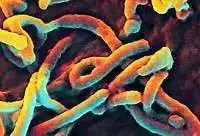
The Dread of Ebola
Ebola, the viral disease, remained in headlines throughout 2014. The 2014 Ebola outbreak is the largest Ebola outbreak in history and the first Ebola outbreak in West Africa. This outbreak is the first Ebola epidemic the world has ever known.
Ebola disease in humans is caused by four or five viruses of the genus Ebola virus. The four viruses are namely Bundibugyo Virus (BDBV), Sudan virus (SUDV), Tai Forest Virus (TAFV) and Ebola virus (EBOV) respectively. EBOV is the most dangerous of the known Ebola virus disease-causing viruses and is responsible for the largest number of outbreaks. The fifth virus in the series, Reston Virus (RESTV), however, is not thought to cause disease in humans but has caused in other primates.
Among people, Ebola disease spreads only by direct contact with the body fluids of an/the infected person(s). Body fluids that may contain the responsible viruses are saliva, mucus, sweat, tears, vomit, faeces, breast milk, urine and semen. However, most people spread the virus through blood, faeces and vomit. Entry points for the viruses include the nose, mouth, eyes, open wounds, cuts and abrasions. Contact with needles and syringes contaminated with the virus may also spread the infection. The Ebola virus may be able to persist for up to 7 weeks in the semen of survivors after they recover which could lead to infections via sexual intercourse.
The span of time between the contraction of the virus and the development of the disease or symptoms ranges between 2,-21 days.
Symptoms include muscle and joint pains, headache, sore throat and fever. The fever is usually higher than 38.3°C (loo.9°F) and is generally followed by vomiting, diarrhoea and abdominal pain. Next, shortness of breath and chest pain along with swellings, headaches and confusion may occur to trouble the infected person. The skin may even develop rashes. In some of the cases, the infected person may experience internal or external bleeding after five to seven days of developing the first symptoms. Bleeding from mucous membranes or from sites of needle punctures have been witnessed in 40-50% of the cases. Vomiting of blood, coughing up of blood or blood in stool is also common.
As a caution against the virus, those who come in contact with the infected person should wear protective clothing including masks, gloves, gowns and goggles. Doctors recommend that the protective gear should leave no skin exposed. The infected person, according to medical experts should be in barrier isolation from other people. All equipment, medical waste, patient waste and surfaces that may have – come into contact with body fluids need to be disinfected.
To disinfect surfaces, some lipid solvents such as some alcohol-based products, detergents, sodium hypochlorite or calcium hypochlorite may be used in appropriate concentrations. Education of the general public about the risk factors for Ebola infection and of the protective measures that individuals may take to prevent the infection is recommended by the World Health Organisation.
Though, the world has knows this disease from the last 4o years, yet there was no cure or vaccine for the same in the market for many years. However, a vaccine named Z Mapp, jointly developed by the USA and Canada, has shown some success in treating the dreaded disease. According to WHO, preventive public health measures are crucial in containing the outbreak.